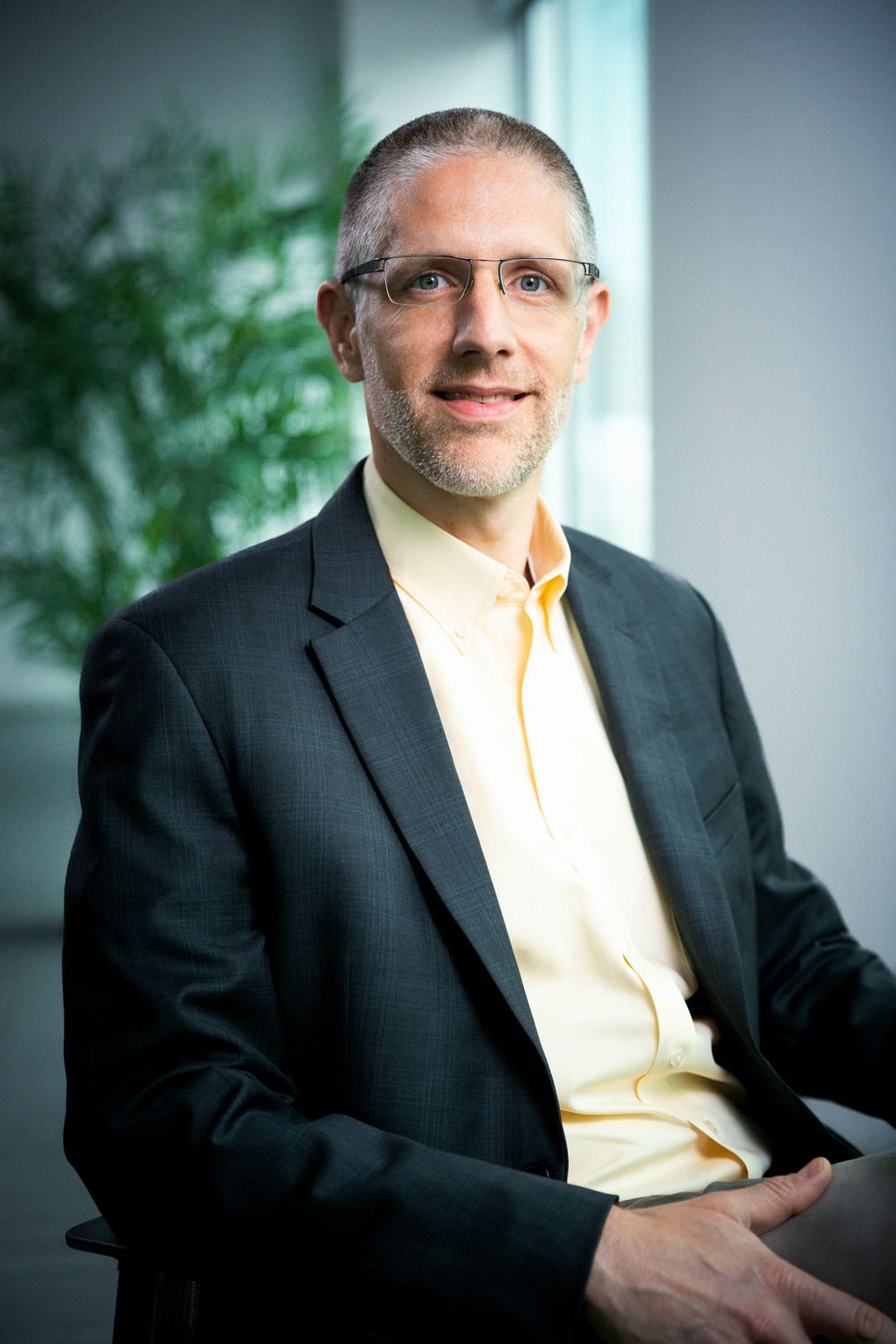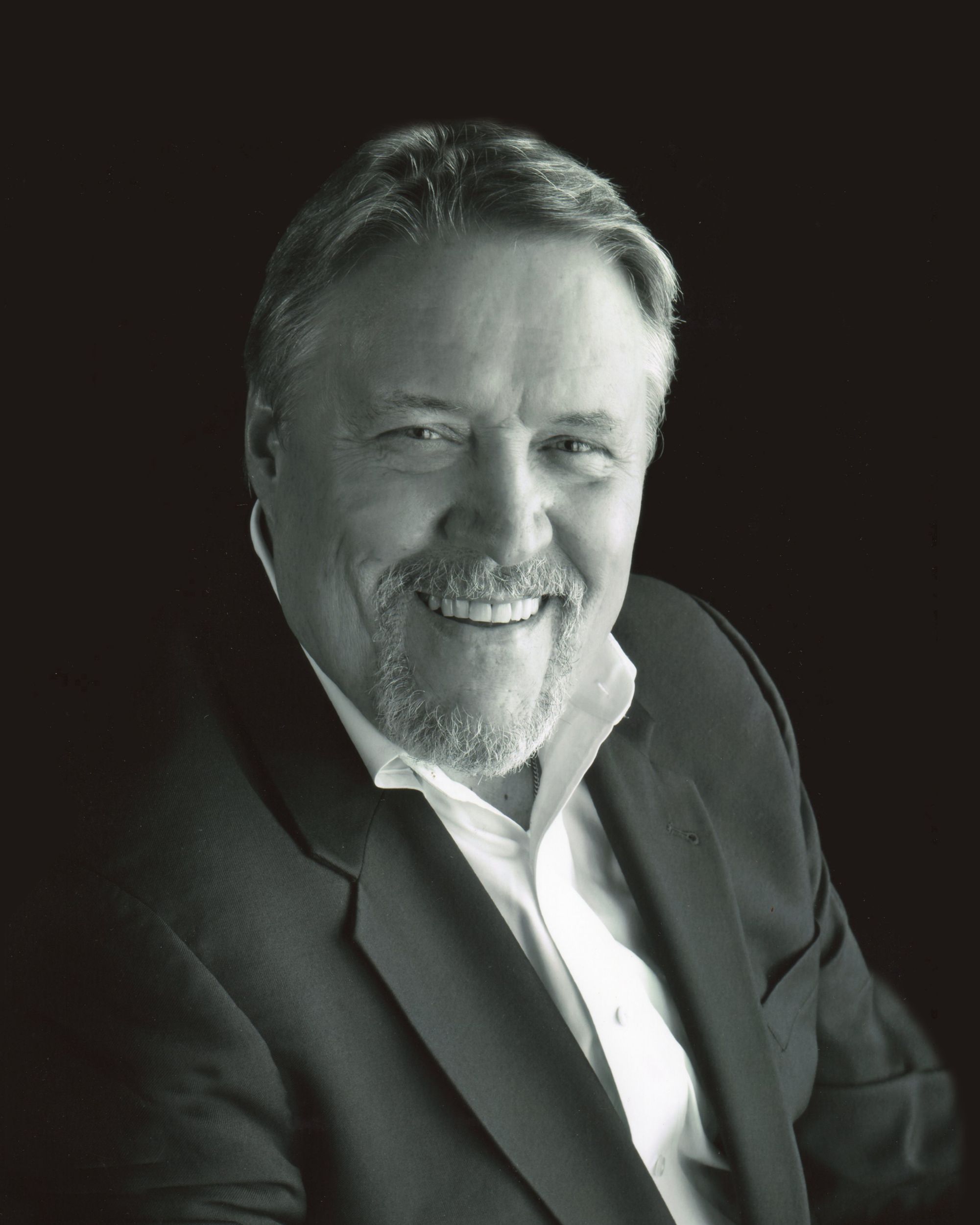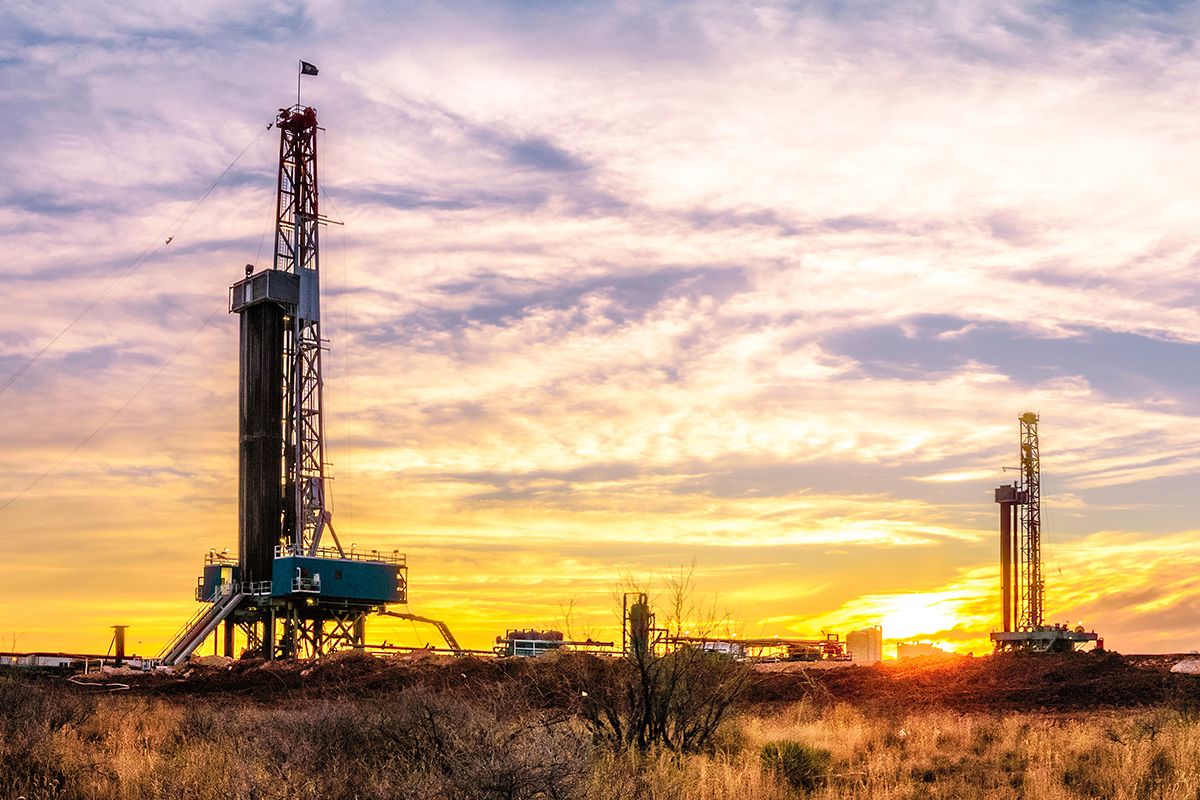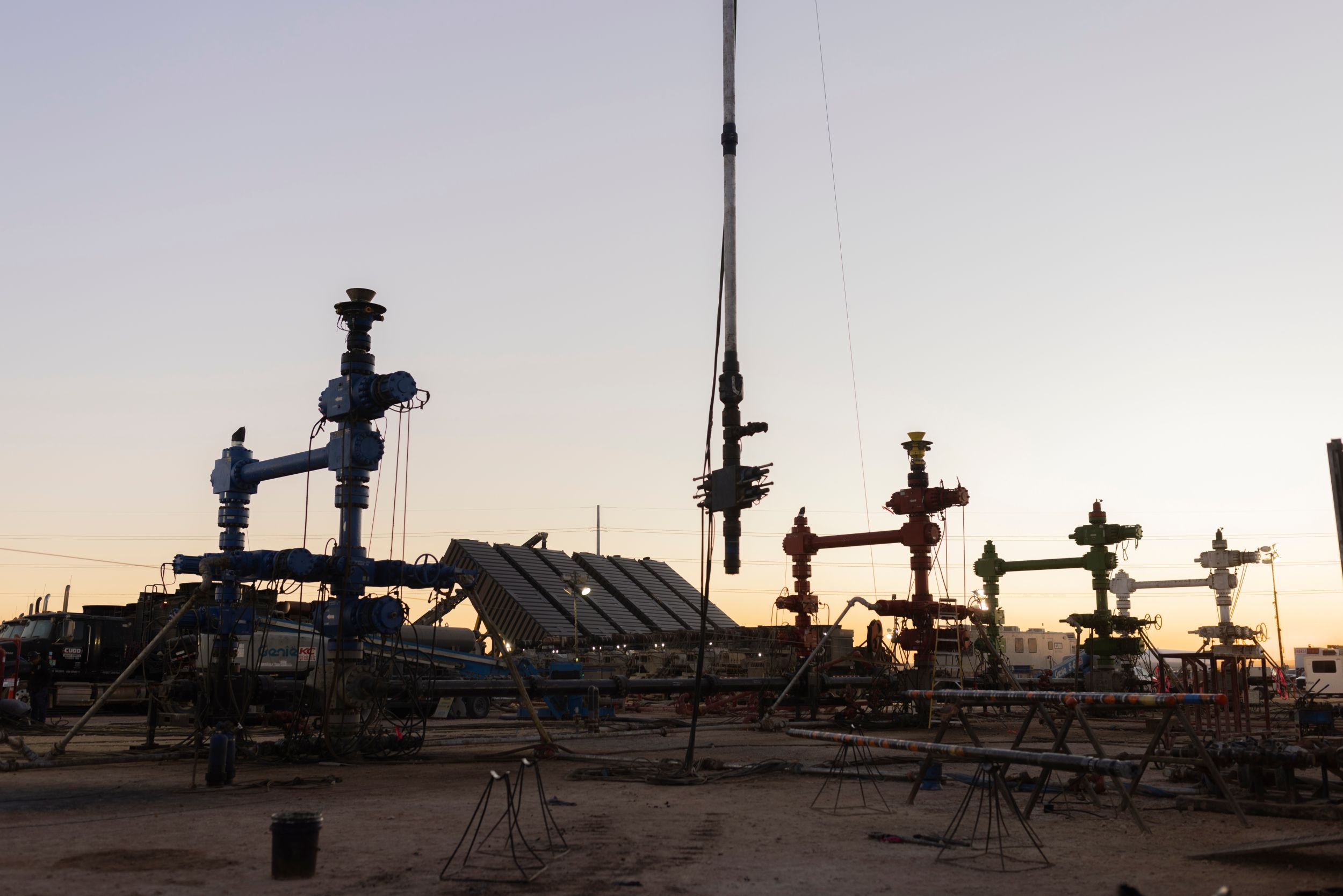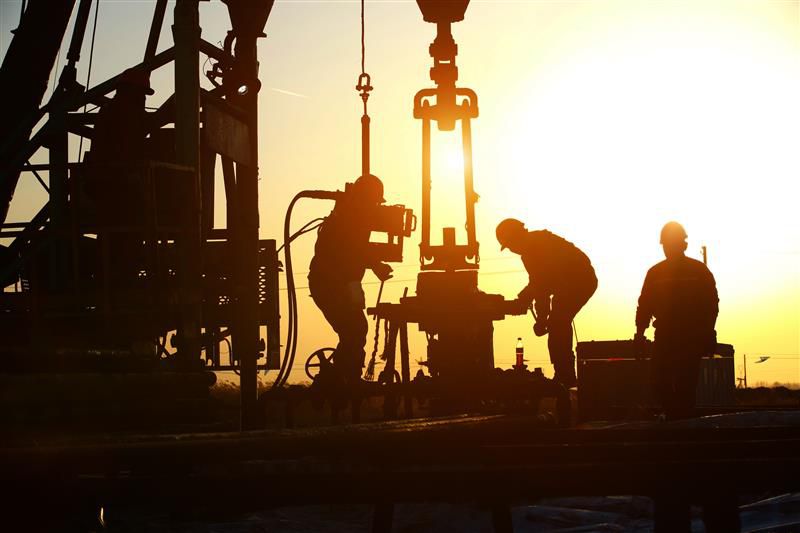Read the full episode transcript
00:00:00 Speaker 1
This episode of The Energy Pipeline is sponsored by Caterpillar Oil and Gas. Since the 1930s, Caterpillar has manufactured engines for drilling, production, well service, and gas compression. With more than 2,100 dealer locations worldwide, Caterpillar offers customers a dedicated support team to assist with their premier power solutions.
00:00:28 Speaker 2
Welcome to The Energy Pipeline Podcast with your host, KC Yost. Tune in each week to learn more about industry issues, tools, and resources to streamline and modernize the future of the industry. Whether you work in oil and gas or bring a unique perspective, this podcast is your knowledge transfer hub. Welcome to The Energy Pipeline.
00:00:51 KC Yost
Hello everyone, and welcome to this episode of The Energy Pipeline Podcast. Today we'll be discussing the evolution and future of gas compression in the oil and gas industry with our guest Rodney Harms, senior product manager for Cat Oil & Gas. Welcome to The Energy Pipeline Podcast, Rodney.
00:01:10 Rodney Harms
Hey, great to be here, KC. Thanks.
00:01:12 KC Yost
Thanks for taking the time to visit with us. Before we get started talking about gas compression, could you take a few minutes to share your background with our listeners?
00:01:20 Rodney Harms
Yeah, you bet. So Rodney Harms, as the intro went. Senior product manager, so have responsibility over the entire Caterpillar Oil & Gas portfolio that's used, whether it's drilling, well service, gas compression, or production power as we talk about. I have the opportunity to be here with Caterpillar coming up on 23 years spanning multiple different businesses, and just a great industry to be part of and great product to be associated with.
00:01:55 KC Yost
Great. 23 years, that's quite a tenure. Excellent job.
00:02:00 Rodney Harms
Yeah, thanks. It's been a good one.
00:02:05 KC Yost
Let's get right into the topics. We've got some great questions for you today, I think. So right off the bat, what are the challenges the gas compression industry in the United States is facing today versus the outlook of gas compression globally?
00:02:23 Rodney Harms
I think it really starts with thinking about the production of gas. When we think about that, since I started in the oil and gas arena circa '06 timeframe, natural gas has gone from 19 TCF to 41 TCF a year. The growth has been significant and steady, and so that's continuing. There's a lot of talk about the energy transition. A lot of times we think about it in terms of energy expansion. So certainly there is a percent of power that's transitioning from various technologies, but overall, it's really energy expansion. It's more of everything to meet the energy needs of the world and really lift people, which excites me. You're lifting people out of poverty, you're lifting them into better health, you're lifting them into better education, better quality of life. So anyway, there's more energy demand globally that we need to meet. And so you know one source is going to meet that all, and so gas has been a huge part of that. Transporting that gas and providing it is a big challenge that the industry continually has to overcome. Also, this idea of energy security. The world's changed a lot over the various recent years, especially as we think of COVID. I think the industry has a better understanding of some of the constraints that exist. Certainly COVID, I think, exposed a lot of equipment supply chain risks that were out there. But I think more recently as the demand for natural gas has continued to climb, the industry's seen this constraint for power to do the work and people. That's kind of the framework that we're operating in. So in the midst of all those challenges, the industry's also having to adapt to regulatory framework that's changing. And some of it is true regulation, and some of it's voluntary. So certainly social license to operate, ESG goals that companies may have is driving a lot of technology change in that space to deliver the power, to deliver the output, but also do it in a way that is meeting environmental goals. Some of those, be it the IRA, that has gotten a lot of focus in the compression space, especially as it pertains to methane. And I think the industry's also figuring out and wrestling with the trade offs that exist. So when we think about, especially in our engine business, we have this trade off between NOx, which has historically been an area of a lot of focus for the industry, to methane and GHG. So a lot in that answer. But yeah, lots of challenges, but I think the industry's used to overcoming them.
00:05:55 KC Yost
So a little bit of my background, I'm third-generation pipeliner. We can actually go back four generations, and my great-grandfather was an oiler on a few wells out in the Ohio River years and years ago. Anyway, my point is that when my grandfather got into the natural gas business about 1919, 1920, somewhere along in there, it was a very simple time. It was basically local supply, local delivery, and there was very little worry about outside influences playing on that part. My father had a few more issues with the regulatory issues and that type of thing. The EPA being developed in the '70s had more regulations, as becoming more aware of the environment and trying to protect it just adds more weight onto it. So at the end of the day, my mind, it looks like the forces that are playing against the gas compression industry now are so much larger than they were back in the simple times of my grandfather doing his work. But it's all for the betterment of humanity, distributing the natural gas, getting it to where it needs to be, it being a clean fuel for burning and operating, and its socioeconomic benefits to it, and that type of thing, while protecting the environment all kind of balls into one. Is that a fair analysis of what you were saying?
00:07:45 Rodney Harms
Yeah. Yeah, I think that's pretty good. It's the evolution, right? And I always think back, it's like in 2006 when the gale or shale revolution started, did anyone really understand where we'd be here in 2024 in terms of the production and the challenges that we've already overcome and the opportunities we have going forward? But yeah, the emissions are becoming a lot more clear. The regulatory framework is now monetizing the emissions, and so there's monetary value associated with any emissions you're producing in some regards.
00:08:30 KC Yost
Right. You mentioned that, and I was thinking about the supply. I remember when I graduated from college in the mid '70s, my father thought I was crazy to want to get into the pipeline business going to natural gas because their projections, because they didn't have the technology then to recognize where these gas reserves were and how to get to them and that type of thing. They were projecting that by the mid '80s we'd all be out of natural gas. And then like you said, 2006 with the shale revolution and all of that, it's amazing what the supply is out there now. Technology is another one of those forces that's working with the gas compression industry. So, good thoughts there. Good thoughts. Thank you. Gas compression is a priority for the oil and gas industry. At the end of the day, there is a fairly significant demand for gas compression solutions with all of these external forces playing on the industry, correct?
00:09:33 Rodney Harms
Yeah, absolutely. There's clearly demand for compression because there's demand for gas. So back to your point, from the early '70s until, again, the shale revolution, industry was kind of flat-ish, down, up, but kind of flat for decades. And so now we're in this period of growth and we got to continue to figure out how to move the energy molecules from where they're produced, where they're consumed, where the power is needed. And that's true of really any energy source; you got to get from where it's harnessed to where it's used. Natural gas has that abundant low-cost source that can be produced in a sustainable way. So it's rightly a priority for the oil and gas industry to solve these problems, because I think, again, it helps people in the end and it's a lifter of people to get them energy.
00:10:43 KC Yost
Good. We talked about the shale revolution in 2006, but there's been a fairly significant change in the industry and the shift in the industry in the past five years, hasn't there been?
00:10:57 Rodney Harms
Oh, yeah. I think we've gone through, I've heard it explained a couple times, you've got shale 1.0 and 2.0 and 3.0. I think it's a good analogy because as we see in shale 3.0, we're seeing a lot more capital discipline. So as shale first took off, there was a lot of expansion, lots of new companies that took off, a lot of capital being deployed chasing it. What we've seen is some consolidation and a lot more capital discipline and shareholder return now. And I think therefore, a lot more focus on total shareholder value and how do we do this really efficiently and sustainably? Those themes keep coming through, especially in light of a lot of consolidation that's happened in the industry throughout, all the way from the exploration and production companies, through the service companies, through the compression companies. So we definitely see that. That shift has been more recent. We talked about it a little bit earlier. Another big shift I guess I've seen is the focus on methane emissions in compression. That was really kicked off with the IRA that put a spotlight on methane and monetizing methane as I said earlier. Because prior to that, a lot of what our customers were talking about and we would hear from the industry is a focus on NOx and VOCs. And so, man, the last two years has been a lot of conversations and a lot of focus on what can we do in the methane space. And so that's also driven a lot of conversation, I think, around electrification as a solution to mitigate that. So those are three themes, capital discipline, the focus on methane, and renewed focus on electrification.
00:13:04 KC Yost
Great that you mentioned that, because I've always considered Caterpillar a leader worldwide when it comes to compressor drivers, whether they be natural gas driven or whether they be electric drive and that type of thing. So what is Caterpillar Oil & Gas doing to meet the needs of your customers in that regard, and frankly other regards that you see that the customers are requesting?
00:13:40 Rodney Harms
That's a good question. There's a lot of different fronts we're operating in in that space. I mean, certainly I think most folks are mostly familiar with our Caterpillar engines and gas engines or spark-ignited engines, as we call them. They're very prevalent in the compression space. Obviously in the much higher power nodes, Caterpillar also has solar turbines, which are used in those higher power nodes. And then we also have electric motors that operate in this space. So really we have the whole suite of products, and so we're able to offer that value. But when we think about the reciprocating engines in that space, there's been a lot of focus on supporting the customers, not just with new product, but supporting the product that's out there. We have nearly 10,000 3600s that are running pumping gas day in and day out.
00:14:41 KC Yost
What's the oldest one you have in operation that you know about?
00:14:44 Rodney Harms
They go back to 1993 that are still out there running. So it's been decades of product. And so certainly as new product is introduced, we have solutions that reduce the emissions footprint of the product, whether it's NOx, VOCs, which has been a lot of focus. But now we actually have reductions in methane that can be achieved, 40% plus in some cases. So when we think about those upgrades and the new product that's coming out, we're not forgetting what's already out there in the field. So we design those with retrofit ability in mind so that as customers reinvest in those assets, because those aren't three-year investments, they're investing in those for the decades, right?
00:15:38 KC Yost
Right, absolutely.
00:15:39 Rodney Harms
So as they rebuild those, they have technology solutions available to them to do that. Some of the challenges are how do you make sure you have the right inventory in place to help customers do that to reduce the downtime? And then beyond that, another product that we have in addition to the motors and the reciprocating engines and the turbines, we actually have a solution out there called Carbon Point Solutions, which is in the carbon capture technology space. And so when we think about that, this is a big focus for customers, lots of investment in different technologies that are out there. But we have a technology path where that can go on the exhaust stream of an engine or work in conjunction with the turbine and capture the carbon.
00:16:40 KC Yost
How interesting. All right, well, that's cutting edge technology. That's excellent. Excellent. I was just listening to you talking about retrofitting compressor drivers that have been out in the field for 20, 30, 40 years and operating and make them work, and the old Polaroid camera issue where each time Polaroid land camera came out with a new model, the old model film and everything became obsolete. Now, obviously, we're talking about a couple hundred bucks here and there and that type of thing, but as a kid back in the '60s delivering newspapers to get some money, that was a lot of money back then to find out my camera was obsolete after two years. So the idea of you guys working hard, obviously the capital expenditure is much higher than this, and the operating costs are much higher. But the end of the day, you advancing your product while still keeping your long-term customers, your original customers in mind, I think is a great mindset for any company to try and make sure that they take care of the people that brought them there. So that's great that that's one of the goals that you work on. So with that, we talk a little bit about Caterpillar Oil & Gas, keeping in mind new products being developed. You mentioned the CO2 capture. Anything else along that line that you'd like to talk about?
00:18:36 Rodney Harms
Sustainability holistically I think we keep in mind. We've talked about it already, but the whole industry is focused on the methane. But I think I often challenge the team, you got to think beyond just the methane. I know that's what's been monetized right now, but think about GHG holistically to make sure we're focused on things like overall fuel burn, for example, or efficiency, because these all play into the customer's total cost of ownership, right? So we can improve the reliability, we can improve the durability. Because we're burning less fuel, we're generating less heat, therefore it's easier on the equipment and the equipment has more durability. That's a good thing too. Because the less often you have to rebuild a component, the more sustainable that is. You have less waste. So we think about that. We think about remanufacture ability, because many of the rebuilds that happened to Cat engines actually consume what we call reman parts. So these are heads maybe that have come off or piston packs as we call them, that actually reuse parts that come out of those engines so that we don't have to start from scratch. We're able to build those back up to new standard and put them back into the engine. So you're eliminating waste on the backside, which has a environmental footprint also. And then just thinking about the future, again, people who are buying assets today plan to have those for decades into the future. So are we building an architecture that allows for them to enjoy the enhancements that teams in the future are going to come up with? So you kind of have to have a little bit of vision on how you do things to allow that and don't let a short-term decision box you in in terms of what you're capable of doing in the future.
00:20:52 KC Yost
I've been looking at your website, and there is a good bit of talk about the G3600 A4 Gen 2 package. What thought went into that? What takes it above Gen 1 to get to Gen 2?
00:21:12 Rodney Harms
The A4 originally when it came out, I'm going to mess up the year that it came out, 2016, 2017 timeframe, was a significant upgrade in terms of the electronic architecture that was on that engine, which allows you to do things. Because you have more computing power, you can do more things real time. And so the Gen 2 then takes that capability combined with some hardware changes to reduce methane and emissions. A lot of it's based on the piston that's in that engine and reducing the areas inside the combustion chamber that don't get combusted essentially. So you're putting fuel, you're putting the air into a cylinder, and then you have a spark plug and it lights the fuel off, and you got to burn all that fuel in that amount of time before you exhaust it. Because if you don't burn all the fuel, you're missing out on an opportunity to produce work, but you're also pushing out unburnt fuel into the atmosphere. That's where a lot of the technology is, is optimizing the piston and the fuel delivery so that you don't waste any of the fuel that's going in there. And again, technology has helped a lot, because we have better analytic tools that we can model all this. We have better material capabilities that can withstand certain stresses and temperatures and allow the engineers to do some really amazing things.
00:22:51 KC Yost
So basically you have the electronics now that will monitor barometric pressure and this, that, and the other and all of these other types of things, much like the 13D, the new engine that's coming out in '25 I think, that basically allows you to optimize fuel efficiency, minimize discharge and waste of energy. Is that saying it right?
00:23:22 Rodney Harms
Yeah, that's right. We had a good electronics architecture that was upgraded years ago, and now we're able to come back in Gen 2 and upgrade some of the hardware that further improved that product. But yet the core of the engine has remained largely the same as we've evolved over several decades. We're already thinking about several upgrades we have coming for that 3600 that'll continue to help reduce the emissions footprint of that engine.
00:23:57 KC Yost
And with all of this going on, this can all then be retrofitted onto the 3600 that was put out in the field in, would you say, 1993?
00:24:09 Rodney Harms
Yeah. There's a big break between what we call the A3 technology and the A4 technology; parts fit up a little bit different. But we make the technology backwards compatible, so they may be different part numbers, but the capability is often very similar even though it's a different part number.
00:24:28 KC Yost
Okay. Good. Good, good. Well, interesting. Thanks for going down that rabbit hole with me. I appreciate that.
00:24:35 Rodney Harms
Yeah, yeah.
00:24:37 KC Yost
Are there any other challenges that gas compression operators start thinking about now with regard to emissions reductions? I mean, we talked about methane, we've talked about CO2 capture and NOx and all of that kind of thing. You said that you had your guys looking into the future. What are some of those things that are coming down the pike?
00:25:02 Rodney Harms
I think what our advice would be to those who are operating this is plan it out. So you have all these assets, they have long lives. Let's overlay the technology availability with the overhaul cycles that are going on in the industry and start planning out how the fleet is going to evolve over time. You got to sit down and think about that and say, "Okay, am I going to run that one to end of life and then I'll make the emissions jump at that point? Do I proactively make an emissions jump, and what's the ramifications for that and the benefits to the business?" I think the other thing that I would say is look to the future of regulations. There's a lot going on still in terms of the greenhouse gas reporting protocol that's recently been published, the IRA continuing to understand the implications of that on folks' business. But not lose sight of things like the good neighbor rule, which sets NOx regulations at 1.5 gram per horsepower hour for engines that are operating in the higher horsepower classes. And those are going to be effective in the future in '25 and '26. So that's something to keep in mind over time.
00:26:32 KC Yost
I don't get excited about future regulations per se, and I'm not sure that you do, but are there any things, anything out there that excites you about the future of gas compression?
00:26:49 Rodney Harms
Mostly the fact that the US continues to produce more natural gas. I think that's pretty exciting, and we have a challenge to figure out how to do it as sustainably as possible. I think we owe that to ourselves as an industry. And I think there's a lot of low-hanging fruit. We can go out there with the technology that's available today to make a big impact. So we don't even need new technology or new regulations; the solutions are already here that can have a significant impact. So that's pretty exciting to me.
00:27:24 KC Yost
And from what I'm gathering from what you're saying is it is possible to be environmentally conscious while still making a good investment to reduce OPEX for natural gas compression. Do I see that right? I mean, it allows you to push another M through the line at a cheaper price. Is that a fair statement? So basically I'm saying that with the improvements that you've made, you talked about the electronics and then the hardware and that type of thing, that not only allows us to be more in tune with the environment and help reduce emissions and that type of thing, but it also allows the operating company to push an extra million cubic feet of gas down the pipeline at a lower price, thus making OPEX a lower common denominator, if you will.
00:28:30 Rodney Harms
Yeah, that's right.
00:28:31 KC Yost
So it's the best of both worlds.
00:28:32 Rodney Harms
Back to that Gen 2 product that you referenced, one of the things you can do with that is also get 10% more power out of the engine. And so you can do more work with the same asset, and you have better efficiency so you're using less gas to do the work. So that's a win. And at the same time, you're reducing emissions. So it's really an and not an or in that scenario. You get both, which is a really exciting thing, I think.
00:29:00 KC Yost
I think so. Absolutely. Absolutely. So are there some products that we can look forward to or something that's been recently released? I know we talked about the Gen 2 making an impact on the oil and gas industry and gas compression division.
00:29:17 Rodney Harms
So certainly the Gen 2 is out there. We're working on technology for our 3500 platform, which is the next size smaller, to allow a significant reduction in methane on existing assets out there similar to the 3600. That'll be an exciting step function change. We're also working through what we call closed crankcase ventilation. One of the interesting, I think, realizations that the whole industry is quantifying, is that a lot of emissions from compression sites can come from either the venting of various equipment that's on site, including the pump and the engine. So when you combust in an engine, some of the exhaust gas or fuel can go around the piston, end up in the crankcase, and then come out of the vent. Well, that vent just goes to the atmosphere today. So there's no reason, and we already have pilots out in the field running that capture that crankcase vent and then recombust it basically. So you eliminate that leak path and harness that fuel. So that'll be coming out here later this year into production. And then we are working on Gen 3. I mentioned that. I can't share all the details about that, but the step function change that we had in Gen 2, we expect that more in Gen 3. That's being worked in the lab right now. So that's pretty exciting on our side that we can keep that momentum going and continue to meet the industry needs.
00:31:00 KC Yost
Well, when Gen 3 comes out, will you come back and visit with us and tell us all about it?
00:31:04 Rodney Harms
You betcha.
00:31:06 KC Yost
Outstanding. Outstanding. I can't believe the time's flown by as quickly as it has, Rodney. I appreciate you taking the time to visit. Just want to check, is there anything else you'd like to add? Any comments? Something we might've skipped over?
00:31:21 Rodney Harms
No, this has been great. We work in a great industry with great people. We have some good challenges in front of us, but I know everyone's up to the challenge.
00:31:30 KC Yost
Super deal. Super deal. Thanks, Rodney, for taking the time to visit with us today. If anyone would like to learn more about Cat Oil & Gas compressor drivers, you can find them on the web at cat.com, and then just type in compressors and you go right there. It's pretty easy. I've done that a number of times. Thanks to all of you for tuning into this episode of The Energy Pipeline Podcast sponsored by Caterpillar Oil & Gas. If you have any questions, comments, or ideas for podcast topics, feel free to email me at kc.yost@oggn.com. I also want to thank my producer, Anastasia Willison-Duff, and everyone at the Oil and Gas Global Network for making this podcast possible. Find out more about other OGGN podcasts at oggn.com. This is KC Yost saying goodbye for now. Have a great week and keep that energy flowing through the pipeline.
00:32:29 Speaker 5
Thanks for listening to OGGN, the world's largest and most listened to podcast network for the oil and energy industry. If you like this show, leave us a review, and then go to oggn.com to learn about all our other shows. Don't forget to sign up for our weekly newsletter. The show has been a production of the Oil and Gas Global Network.


